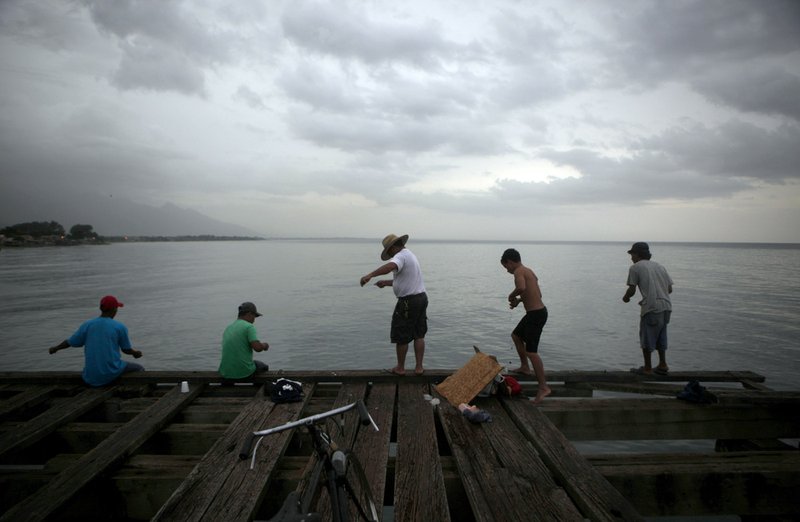Tropical Storm Matthew toppled power lines and left thousands without power for hours in Honduras before weakening to a depression over Belize on Saturday. Heavy rains were falling in Central America, however, and forecasters warned of possible flooding and mudslides.
AP interactive
There were no immediate reports of major damage, but thousands were evacuated in Honduras. In Olanchito, near Honduras’ northern coast, a creek overflowed and flooded a house but firefighters were able to rescue its 10 occupants.
The storm made landfall Friday on Nicaragua’s Caribbean coast and quickly crossed into Honduras. Saturday afternoon, Matthew had maximum sustained winds of 35 mph (55 kph) and was moving inland toward Guatemala and Mexico at about 15 mph (24 kph).
The U.S. National Hurricane Center in Miami said Matthew could unleash 6 to 10 inches of rain, with as much as 15 inches possible in some areas in Belize, Guatemala and Mexico’s Chiapas state.
In Honduras, authorities evacuated 300 people from small communities in the Gracias a Dios province, on the border with Nicaragua.
“A lot of rivers have high levels because of soil saturation due to frequent rains since May,” said Randolfo Funez, operations director of the Contingencies Commission.
Authorities said classes would be suspended until further notice and that 15,000 schools had been made available to be used as shelters.
Meanwhile far out over the Atlantic, Hurricane Lisa weakened to a tropical storm and was drifting slowly north with maximum sustained winds near 70 mph (110 kph).
Read tomorrow's Arkansas Democrat-Gazette for full details.
Thank you for coming to the Web site of the Arkansas Democrat-Gazette. We're working to keep you informed with the latest breaking news.
